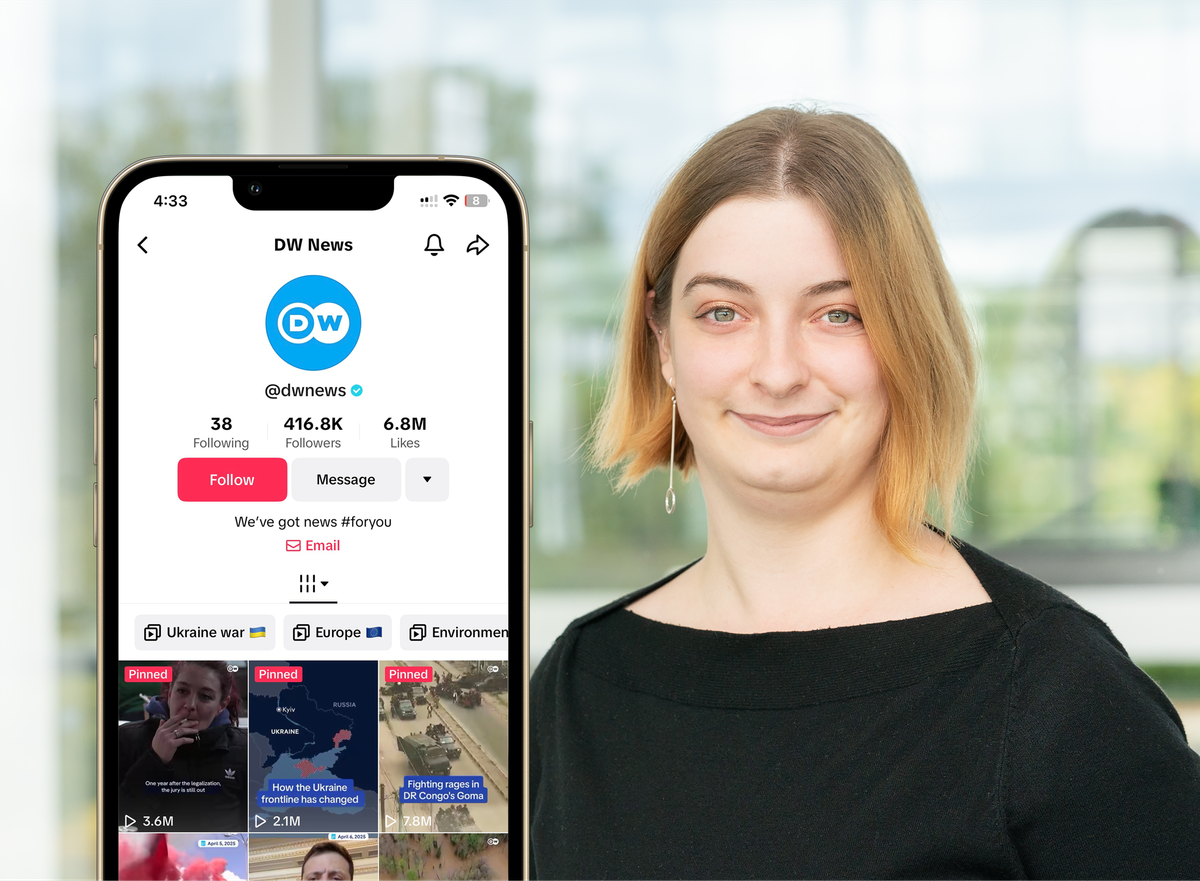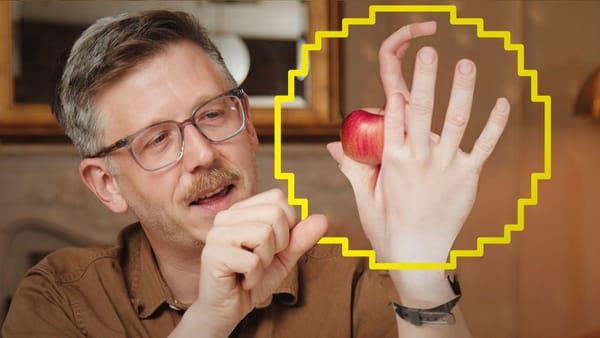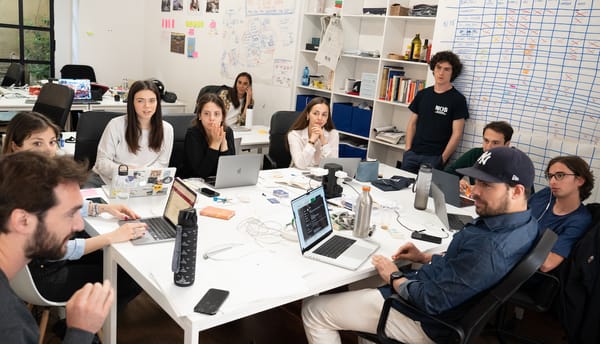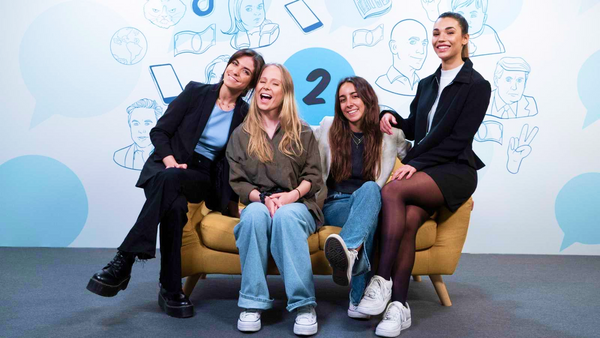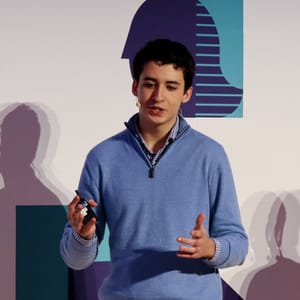Though chances are you’ve heard of Deutsche Welle before, did you know that the German-based international broadcaster operates in 32 languages across the world, and reaches a staggering 320 million weekly users. What’s more, when it comes to social media strategy, DW is not just keeping up with the times, it's setting the standard, particularly on platforms like TikTok. By embracing a platform-centred approach, DW has transformed its content creation process across its 30 TikTok accounts to engage younger audiences in a way that feels authentic and relatable.
@dwnews
One of Deutsche Welle's 30 TikTok accounts
How did this come about?
In the past couple years, TikTok has become Deutsche Welle’s third most successful platform, following YouTube and Facebook. Erika Marzano, DW’s Audience Development Manager, explains in an exclusive interview for Yoof News: ‘My focus is on social media, specifically TikTok. I bring platform expertise to ensure our editorial content reaches and resonates with our target audience across various accounts. This involves understanding social media algorithms, audience behaviour, and this allows me to tailor Deutsche Welle’s journalism to fit each of our accounts’.
Unlike many traditional media outlets that treat social platforms as gateways to their websites, DW prioritises audience engagement and meaningful discussions. ‘Our primary aim is audience engagement and fostering healthy debates,’ Erika adds. ‘Redirecting traffic to our main website is a secondary goal—it’s there if users want it, but it’s not our main focus.’
This ‘TikTok centred’ mindset shapes DW’s content creation addressed to Gen-Z. Videos are tailored to TikTok’s vertical, short-form video format and infused with trends, ensuring their relatability and appeal to younger audiences. This strategy mirrors the playbook of other legacy media like the Washington Post, which has also experienced an outstanding success on TikTok by prioritising authenticity and personality-driven content. DW’s hosts ‘aren’t traditional news anchors’ Erika notes. ‘Rather than preaching, they’re conversational and relatable, engaging with audiences at a peer level.’
@dw_deutschlernen Wann bist du das letzte Mal mit dem Zug gefahren? 🚅 In diesem Video von DW Deutsch lernen könnt ihr deutsche Vokabeln zum Thema „mit dem Zug fahren“ lernen. #deutschlernen #learngerman #deutsch #Deutschland #dw #deutschewelle #german #germany #vokabeln #wortschatz
♬ Originalton - DW Deutsch lernen
Local voices
DW’s decentralised approach to TikTok relies on its global bureaus to create regionally relevant content while maintaining consistent journalistic standards. ‘Each language department operates its own TikTok account, and within English, we also divide by topics like science, environment, and culture. These teams work independently to manage their accounts,’ Erika explains. ‘Thematic teams, like those focused on science or business, collaborate with language teams to pair topical expertise with audience insights.’
This collaboration allows DW to adapt its content to local trends and demographics. ’If cryptocurrency is trending in India, teams might co-create a series explaining it through stories relevant to that audience,’ Erika adds. Hosts are selected from local teams to reflect the target audience’s culture and foster deeper connections.
Building trust with Gen-Z
Deutsche Welle recognises that Gen-Z values authenticity and interaction, and you can feel it on their social media. TikTok hosts actively respond to comments and use community feedback to shape new content. ‘Comments aren’t just answered; they inspire new videos,’ Erika points out. ‘This helps foster a two-way dialogue with the content strategy being partially led by the community.’
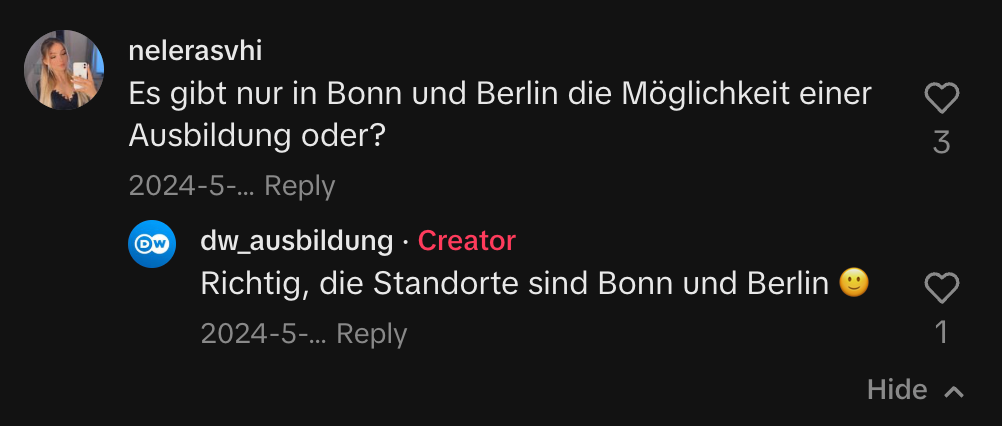
DW also experiments to discover what resonates with its audiences. ‘For new accounts, we treat the first three months as a pilot phase, trying formats like more traditional news reports, explainer stories, humorous trends, or user-generated content,’ Erika shares. In some regions, DW has found surprising results. ‘In North Macedonia, for example, hard news performed better than expected, contrasting with the entertainment trends we see elsewhere.’
Format rather than platform
For Erika, however, what’s crucial isn’t TikTok itself but the storytelling format it popularised: vertical, short-form video. She explains, ‘This format has influenced platforms like Instagram, YouTube, and even websites, becoming the standard for sharing information. Our teams now specialise in producing this type of content, which we distribute across platforms.’
This adaptability is critical. Erika elaborates, ‘You can never fully rely on third-party apps or platforms. Laws change, and platforms evolve. For example, this year, Instagram and Meta overall have visibly downranked political content, which impacts media organisations.’
In some contexts, switching entirely to native platforms has proven viable as shown by certain brands and countries. Erika notes, ‘This strategy works where trust in local media is exceptionally high, and the brand’s credibility resonates across all demographics. For DW, with its diverse target regions and languages, it’s essential to be where the audience is—on social media—while also maintaining our website, newsletters, and podcasts.’
By embracing both platform-specific strategies and broader content formats, Deutsche Welle balances global reach with local relevance, demonstrating how legacy journalism can adapt to evolving digital ecosystems.
TikTok as a search engine
TikTok’s evolution into a search engine has reshaped DW’s content strategy. This made SEO a critical tool for discoverability, with captions playing a central role. ‘Captions need to signal clearly to the algorithm what the video is about,’ Erika explains. This shift has moved DW away from short and often humorous captions toward functional, keyword-rich descriptions informed by TikTok’s API, Google Trends, and other tools.
So what?
Unlike traditional legacy media ‘social-last’ strategies, using social media as a mean to funnel audiences back to their main platform, Deutsche Welle treats TikTok as an independent entity. Content is designed specifically for the platform, with audience engagement and dialogue taking precedence. Their localised strategy is also extremely successful, exposing audiences to local hosts addressing issues their communities care about. This strategy guarantees the audience don’t perceive DW as a multinational attempting to push a one fits all model. And although we won’t dive into the follower count for each of Deutsche Welle’s 30 TikTok accounts, we can tell you that their strategy keeps on delivering results.
Want to follow Erika’s journey? Reach out to her on Linkedin.


